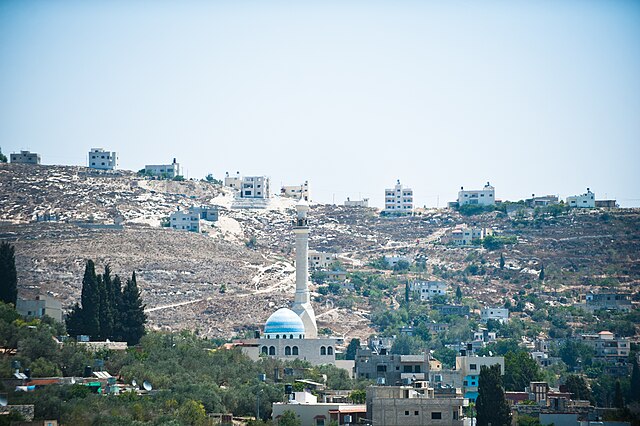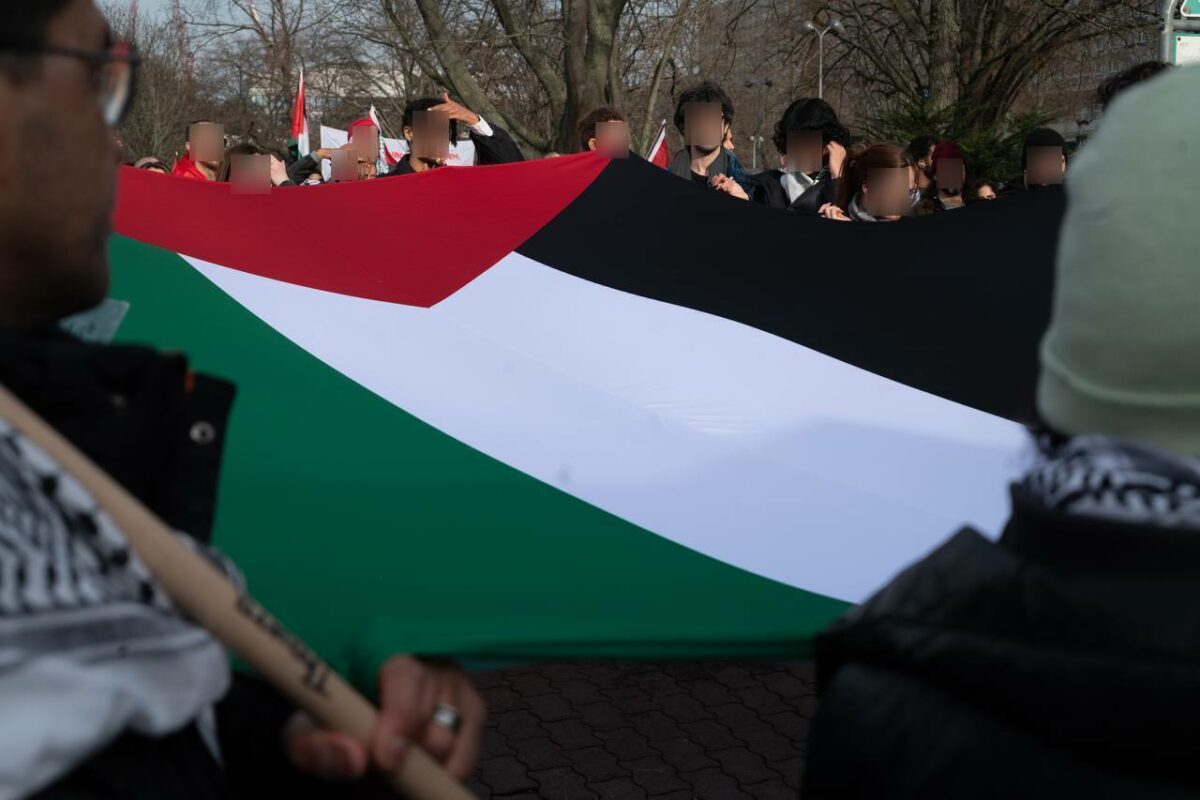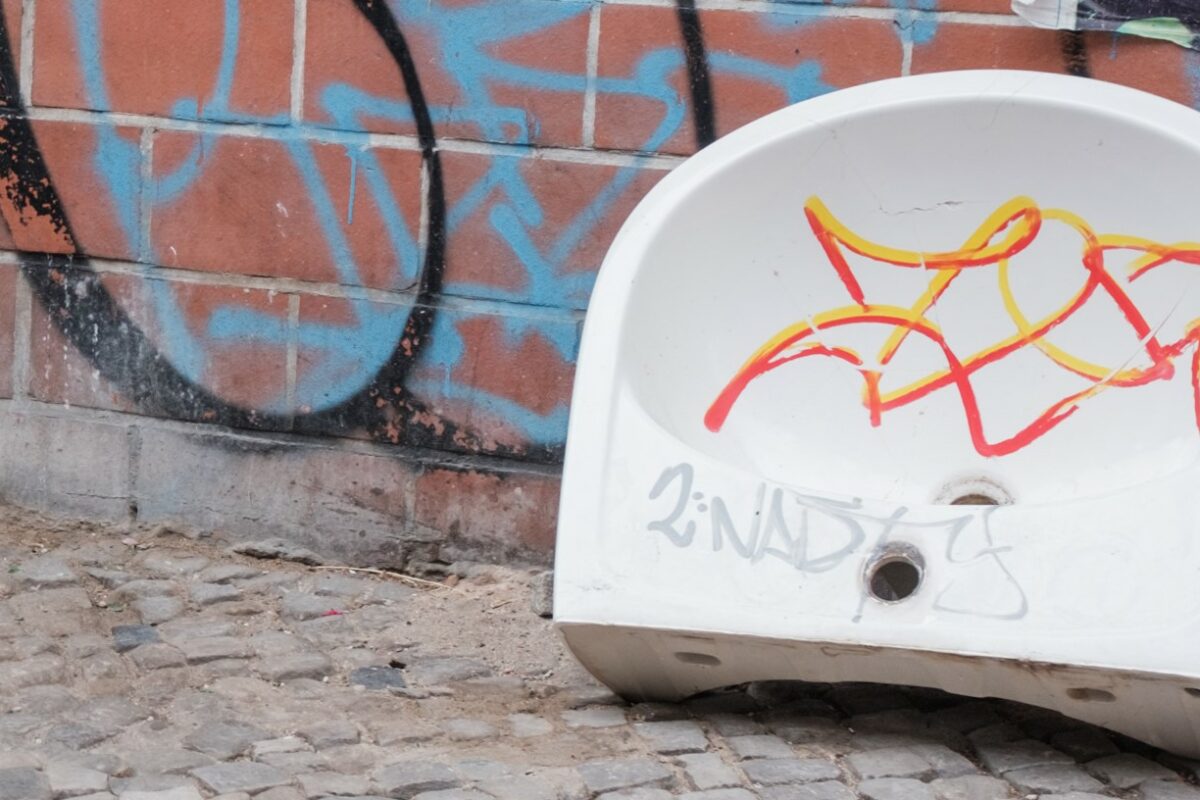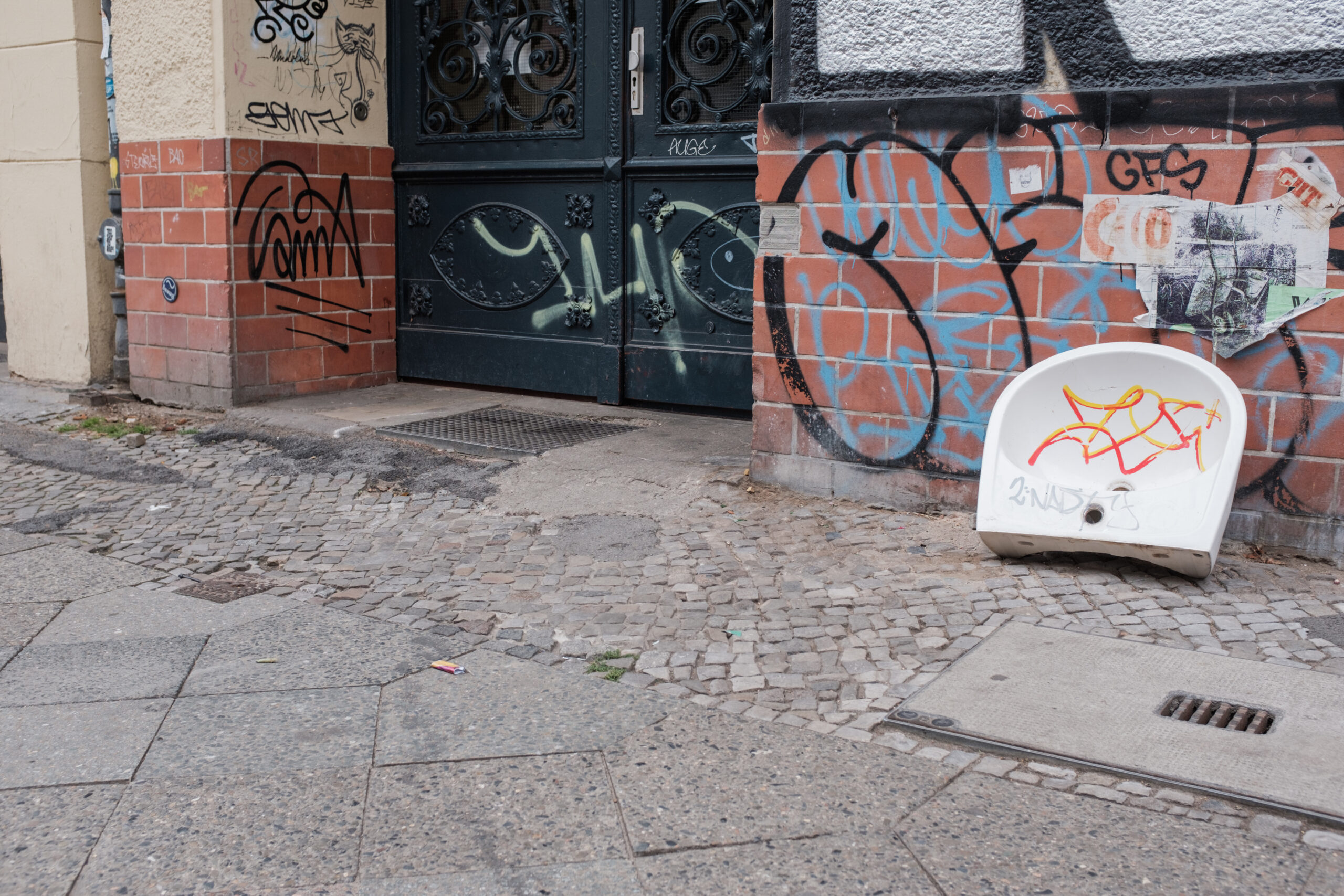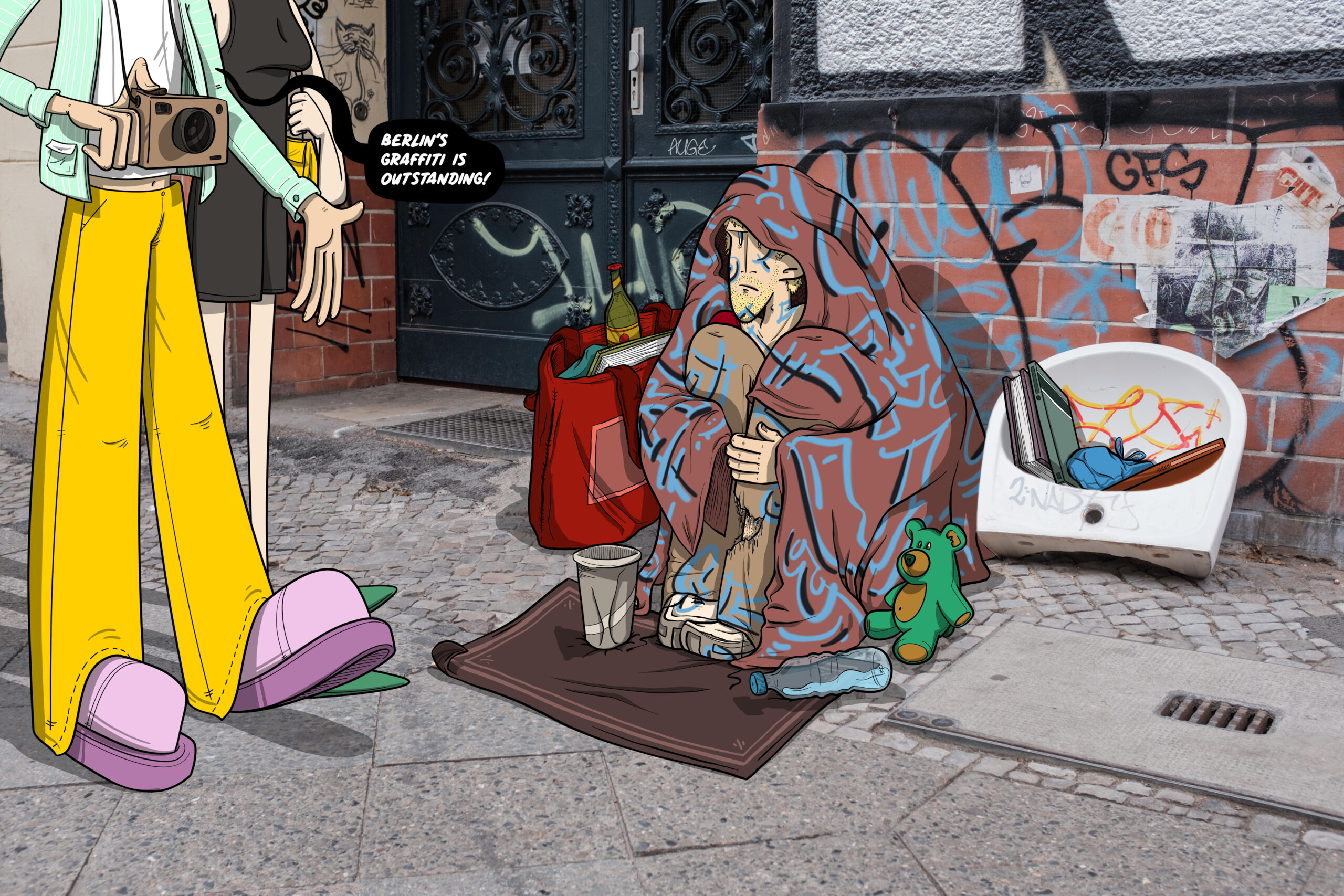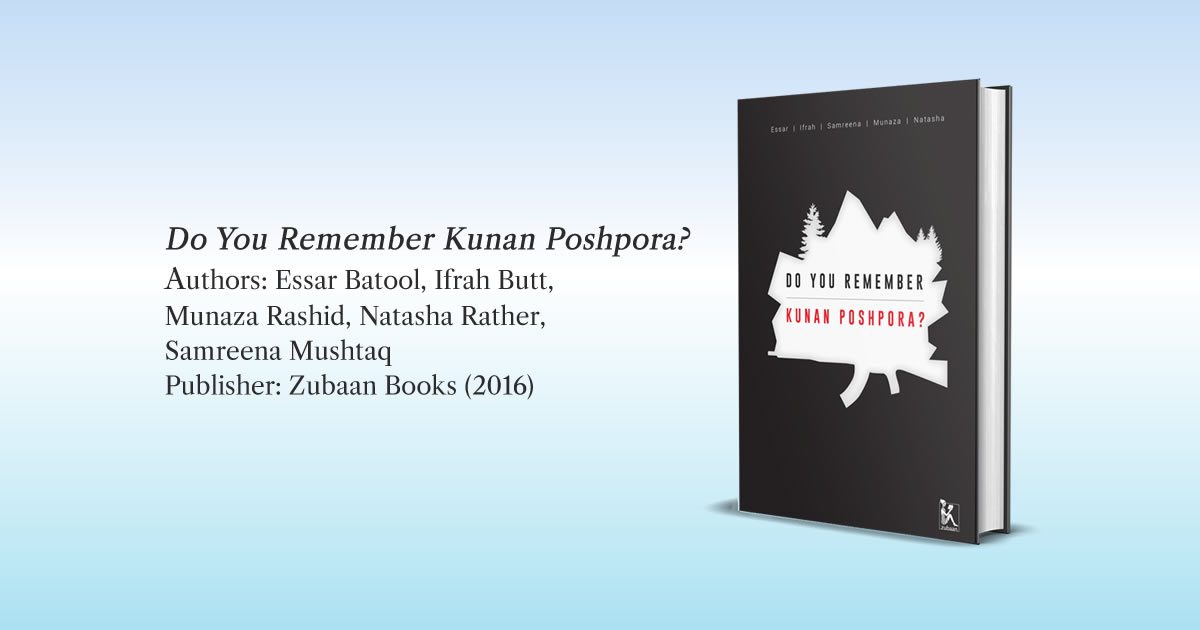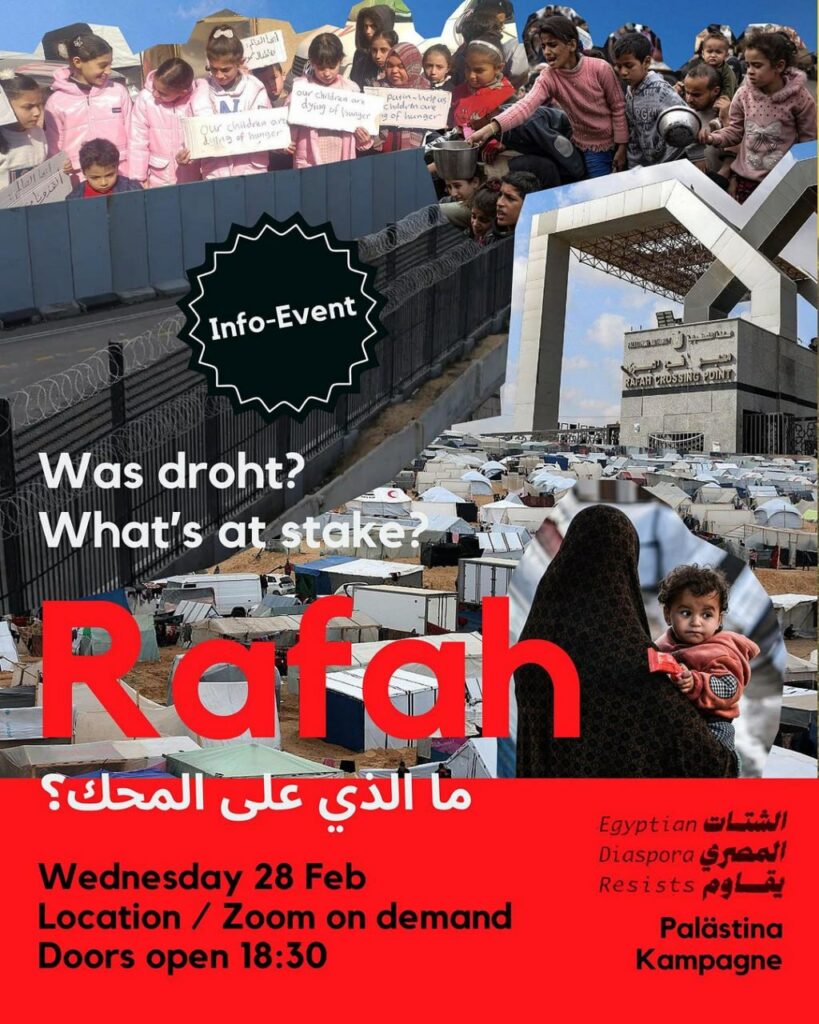Content note: Discussion of military violence and rape
The following text is an excerpt from the book Do You Remember Kunan Poshpora? by Essar Batool, Ifrah Butt, Munaza Rashid, Natasha Rather and Samreena Mushtaq, first published by the New Delhi-based feminist press Zubaan in 2016. The book chronicles a case of mass sexual assault and rape committed by the Indian Army in the villages of Kunan and Poshpora in Kashmir, in February 1991. The day, 23rd February, is also commemorated as Kashmiri Women’s Resistance Day.
What is it like to be a Kashmiri woman today? For any woman, fighting the dominance of men is hard enough, no matter where you come from, but in Kashmir we carry the burden of living two oppressed identities. We grow up learning two realities of life, which, however hard you might try, cannot be separated from each other. To begin with, there is silence, unfortunately taught as a survival technique to women across society. Patriarchy seems natural and eternal, it is the governing principle of the lives of women, imbibed through society, religion, tradition and culture. But we bear another burden: the silences of an occupation are even more deafening.
We must not just fight back against the everyday threats, like street harassment and sexism, but also against an occupying force that closely monitors every attempt to speak against it and the multitudes of its uniformed representatives dotting our valley. All Kashmiris of our generation have vivid, early memories of guns, the sounds of bullets, of Hindi-speaking army men entering their homes, and those humongous green, terror inducing, armoured vehicles that often announce ‘rakshak’ in screaming white letters. The earliest memories of her teenage years that any young Kashmiri woman will have are that of angry-looking armed men at street corners, heads covered in black bandanas, staring at any passing girl and jeering and making lewd remarks. To someone asking why we’re accusing the Indian Armed Forces when Kashmiri men in their position might do the exact same thing, we are tempted to say, try and talk back to someone, the muzzle of whose gun is staring at the tiny space between your eyes.
The historian Uma Chakravarti quotes a Manipuri woman who was raped by the armed forces:
“They have the power and they have the guns! I think we better stay silent.” [1] The gun, a symbol of power for them and of fear for the people, is enough to silence voices of dissent, however legitimate they might be. The first thing a Kashmiri woman is taught is to be aware of her vulnerability, to understand the many struggles she will have to undergo to prevent herself from becoming a victim. Dr Yakin Erturk, former UN Special Rapporteur on Violence against Women, has pointed out, “Militarized environments empower both public and private patriarchy.”
The women of Kashmir have borne many losses. Some have lost their lives, becoming the collateral damage of conflict. Others have lost their loved ones, watched them disappear into oblivion, sometimes to have them returned tortured, broken, and destroyed. Many live under the threat of imminent loss and that much dreaded word, rape. Rape has been used as a weapon of war and terror in Kashmir. Kunan-Poshpora is just an obvious and blatant example of the sexual violence that is committed with impunity against women in Kashmir. We live sexual violence in the subtlest forms every day. We stand at the gate waiting for loved ones to return, apprehensive and anxious. We are mothers, daughters, wives and sisters, worried sick for the safety of our families, asking our men for the nth time if they have checked that they’re carrying their I-cards, reminding them to avoid any green/khaki human form, urging them not to get into any trouble; and telling our young women to always be very careful, to only go out if they must, and not alone, and to come home before dark. Avoid the bunkers that house the uniformed men. Take an alternate road. Don’t use that road unless you have to. Apprehension is what we feel on a daily basis. This is how we live. We have had lullabies of bullets drifting us to sleep, the smell of blood waking us up, fear keeping us busy and hope keeping us alive. We Kashmiri women have been at the centre of the conflict, even though we have almost always been portrayed as victims, on the sidelines of the armed uprising. We too have resisted and survived.
We have chosen to resist in ways that range from a simple curse or a kangri thrown at an armed officer trying to molest us, to participation in stone throwing, street protests, and mass funerals, to supporting the armed struggle and organizing and working in civil society to express our political opinions and affiliations.
Anjum Zamrooda Habib, an eminent political, social and women’s activist and author of a jail memoir, Prisoner No. 100, spent five years in the infamous Tihar jail, held on fabricated charges. In an interview with Mushtaq ul Haq Sikander, she remarks on the non-recognition of the sacrifices made by women: “When resistance is amalgamated with politics only power seems to be the concern, plus in the war zone memories are short lived, add to this the fact that the whole world is male dominated and men don’t want to acknowledge the sacrifices of women and all these factors add up to foster this apathy.” The fragility of memory coupled with the general patriarchal nature of society tends to make us forgetful or at least ignorant of the participation of women in resistance.
Aasiya Jeelani is a name known to many Kashmiris: a young journalist and human rights activist who lost her life fighting for justice while on an election-monitoring mission in 2004. She edited and wrote in Voices Unheard, a magazine that was dedicated to the issues and struggles of women in Kashmir. As Suemyra Shah says in her tribute to Aasiya [2], “Aasiya was one of the many ‘behind the scenes’ women who was a living example of the strength of Kashmiri resistance in the face of many ugly years of tyranny and oppression imposed by outside intruders.” There are other such examples of individual women resisting publicly in a strong political voice.
However, there are thousands of other nameless and anonymous Kashmiri women who have together become a single and strong voice of resistance. In her account of the lives of Kashmiri women, Gita Hariharan writes:
“All the women spoke of the unbearable odds against conducting such safe, healthy, normal lives. But all of them, without exception, also spoke, in one way or the other, about their battles against these odds. About their anger and frustration; their protests; their plans of action; their travel in search of support. These women have had to make the language of resistance their mother tongue.”
The younger generation of women in Kashmir has become increasingly participative in the discourse of dissent and resistance.
All of us vividly recall moments from 2008 and 2010 when killing young Kashmiri men seemed to be the favourite pastime of the Indian Army. Protests were held in the women’s colleges we studied in. Nobody stopped us, we were only asked to be non-violent and not indulge in sloganeering of any sort. Anger manifests itself in various ways: joining a protest in a college was one of them. We marched all in white, protesting the brutal, cold-blooded murders; shouting slogans of ‘azaadi’, though we were warned not to, and we rejoiced when similar slogans echoed from the neighbouring boys’ college.
But you don’t have to be a college-going, middle-class Srinagar girl in a protest march to have a political opinion about the occupation. Women have resisted through more traditional cultural channels and have voiced their feelings quite clearly. We have been told of women glorifying those killed by the Indian Army as martyrs, through wanwun, the songs sung at moments of celebration in Kashmir. Seema Kazi states, quoting Rita Manchanda in her book, Gender and Militarisation, that as a cultural expression of resistance, “women would break out into a wanwun, the traditional Kashmiri song of celebration, intertwining couplets in praise of local mujahideen (freedom fighters).” [3] Women have mourned for the men they lost, for the sons who never came back, for the daughters who were raped, and for their beloved and beautiful land under the siege of tyrants. When the women of Kunan Poshpora speak, whether publicly or privately, it is clear that they believe that they were attacked because they are Kashmiri – in the same way as young Kashmiri men are martyred – and the women’s sacrifices are as great as those of any male martyrs.
Yet for years the women of Kashmir and of Kunan Poshpora have been portrayed as victims rather than survivors. The Indian media has shown them as weak burqa-clad women who are passive and voiceless. But lately, even in mainstream media accounts, the Kashmiri woman has been seen in a new avatar, brandishing a stone in her hand, defiantly challenging the Indian Armed Forces on the streets. Sanjay Kak, in ‘The Last Option: A Stone in Her Hand’, remarks:
Until the other day, Kashmiri women were little more than a convenient set of clichés, shown as perpetual bystanders in houses that overlook the streets of protest. When seen outside of that protected zone, they were cast as victims, wailing mourners, keening at the endless funeral processions […] but now an unfamiliar new photograph of the Kashmiri woman has begun to take its place on newspaper front pages. She’s dressed in ordinary salwar-kameez, pastel pink, baby blue, purple and yellow. Her head is casually covered with a dupatta and she seems unconcerned about being recognized. She is often middle aged, and could even be middle-class. And she is carrying a stone.
Kashmiri women are taking over street protests, hurling stones, while breaking traditional stereotypes and inhibitions, and creating a new kind of expression of resistance. Kashmiri women have always been part of mass rallies, and political funeral processions against killings. Soutik Biswas writes, “The coming out of women in the Muslim-dominated Kashmir valley has been helped by the fact that they have been traditionally freer than their counterparts in many parts of the world.” Thus while Kashmiri political life continues to be male dominated, Kashmiri women are coming to the forefront of the articulations of dissent, of resistance, and of freedom.
One such woman is Parveena Ahanger. Parveena lost her 14-year-old son to the elusive, yet much documented phenomenon of ‘enforced disappearance’ back in 1990. While fighting her case in the Srinagar High Court she, the human rights lawyer, advocate Parvez Imroz, and some relatives of the disappeared persons formed the Association of Parents of the Disappeared Persons (APDP), an organization that advocates the cause of those like her son who ‘vanished into thin air’. Parveena is the voice of resistance, and of the relentless search for justice. She transformed her grief into a resolve to fight not only for herself but for hundreds of other parents. The women of Kunan Poshpora speak the same language of resistance; they have been speaking it for 24 years now, fighting it out every moment of the day in numerous ways.
We, a group of young, professional women from Kashmir, resisting in our own ways, have a story to tell: the story of Kunan Poshpora that remains a part of the valley, a story that continues to flow with the streams, fall with the rain, and sleep on the restless earth like the snow.
We are five different girls, born and brought up in the land that is the clichéd ‘paradise on earth’; the place they show on Indian television where girls are dressed in embroidered pherans and decked up in heavy silver ornaments, happily singing bumbro bumbro, and dancing the rouf by the Dal lake, with snow-covered mountains in the backdrop. Well, that is not quite the truth. We breathe air that is heavy with the smell of blood mixed with mud, air that resounds with the noise of army boots and gunpowder. We live in a place where the Indian Army mass raped women in Kunan Poshpora in 1991, and describe any protest against the crime a conspiracy to defame them. The valley is full of cries and wails, of the songs of mothers about their sons who are dead, of women who found their world destroyed overnight, raped by Indian Armed Forces, the men in those hideous green uniforms, the sight of which makes you cringe if you are a Kashmiri woman. It’s not easy for us young women to tell this story of the women and men of Kunan Poshpora. This book is our attempt to tell their stories and build on the struggle that they have started. We are the narrators of this story, members of the support group for Kunan Poshpora, and among others, witnesses to the conflict.
The conflict that has seen a brutal military occupation, countless cold-blooded murders, mass rapes, endless enforced disappearances and creation of mass unmarked graves, has nurtured us. We have been brought up in an environment where words like rape, molestation, and any word with ‘sexual’ as a prefix was not to be mentioned ever. We have grown up learning the ‘safe’, and the ‘politically correct’ language, in our offices and universities. Words like ‘conflict’ have to be replaced by ‘development’; we are taught to be blind to the facts. We have gone through a rigorous grind where we are taught that there is no such thing as a ‘human rights violation’ and that you have to be apolitical to survive. This is a place that is free of the freedom of speech. In Kashmir, any expression against the state is met with stern action and hence the success in creating a mass silence. That is just how it is here; life in a cage where you talk only when it is certified as ‘state language’.
We have studied in universities that don’t allow you to choose politically loaded ‘explosive’ topics for research; where researching about the kangri and pheran is seen as Kashmiriyat, the unique sense of being Kashmiri, and where analytical abilities and political organizing by students are kept in check by making campuses absolutely ‘controlled’.
Yes, this is how we have grown up – women kept oblivious of the atrocities committed on the people of our land in the name of our ‘protection’ in the familial sphere, and of ‘national integration’ in the public sphere. It is important that we tell this story no matter how hard it is, for there have been repeated attempts to bury it, to erase it from public memory. That is precisely why we are writing, why we are narrating the tales of that night and the subsequent 24 years – lest we forget. In a conflict-torn place, the repetition of atrocities by the occupying forces is so systematic that you commemorate all the dates of a calendar by some massacre, killing, disappearance, encounter or rape. Public memory tends to become fragile. It is easier to forget than to remember and live each of these atrocities every day. We might choose to push the memories into dark corners of our mind, but the survivors have no such choice; they are forced to live with their memories, day in and day out. This book is a remembrance, a tribute, a movement against forgetting, a way of preserving and giving our memories back to ourselves, of telling the story of Kunan Poshpora as it happened and the continuing attempts of the Indian Army to obliterate the case and its memories.
1 Chakravarti, Uma (2014). “‘They Have the Power, They Have the Guns – We Better Remain Silent’: The Meaning of Impunity on the Ground” in Patrick Hoenig and Navsharan Singh (eds.), Understanding Impunity: Patterns of Human Rights Violations in India. New Delhi: Zubaan.
2 Shah, S. 2014. ‘A Queen of her Times: ‘Aasiya: Martyr of Peace’. Pp. 38–41. Kashmir. Jammu & Kashmir Coalition of Civil Society.
3 Kazi, Seema. (2009). ‘Gender and Militarisation in Kashmir’, pp. 135–53. Between Democracy and Nation: Gender and Militarization in Kashmir. New Delhi: Women Unlimited.
